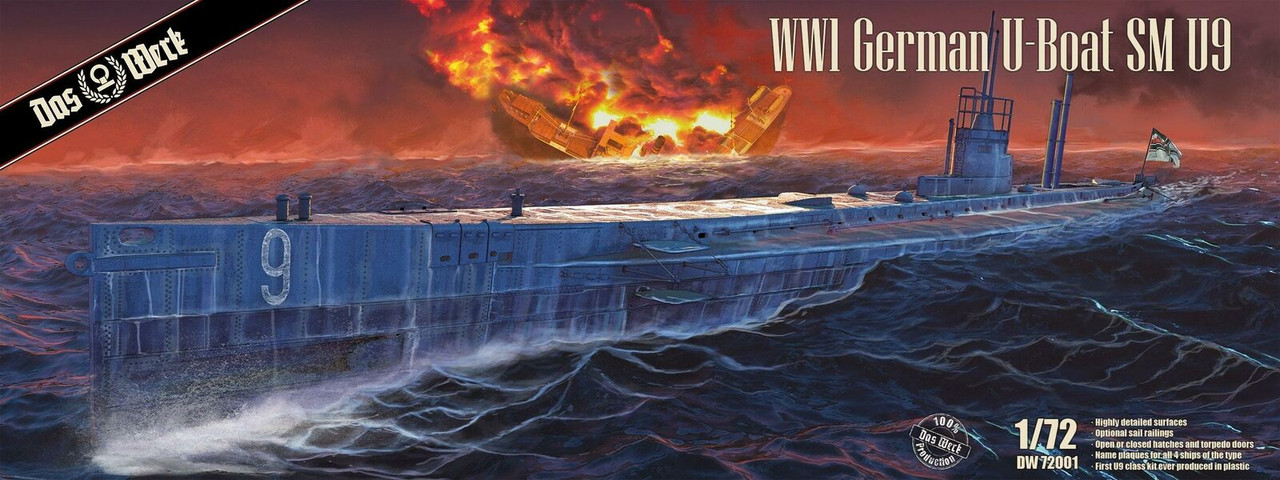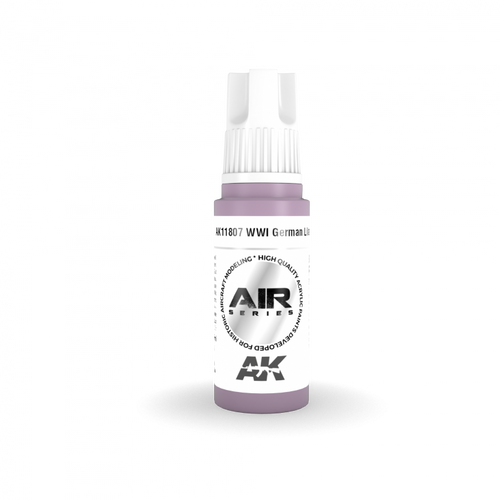Product Description
First U9 class ever done in scale in plastic
High accurate shapes and dimensions
Highly detailed surfaces with realistic rivet details
Optional sail railings with fine details on both sides
Open or closed hatches and torpedo doors
Name plaques for all 4 ships of this class
Optional upper rudders
Optional masts- Positionable exhaust stack
Includes turnbuckles for advanced modelers
Display stand included
Scale: 1:72
Length: 804mm
Beam: 83mm
Height: 150mm
Parts: 164
Rivets placed: approximately 7000
S.M. Unterseeboot U9 Class
These ships can be built:
U-9
U-10
U-11
U-12
The Original
SM U9 (Seiner Majestät U-Boot) was a petroleum-electric submarine of the German Imperial Navy of WW1.
The double hulled U-Boat was 57.38 m long, 6.00 m wide, had a draft of 3.13 m and a displacement of 493 tons above and 611 tons under water. It could dive to a maximum of 50 m in about 50–90 seconds.
It was powered by 1000 HP petroleum motors on the surface and by 1160 HP electric motors while submerged. With these U9 can speed up to 14.2 knots above water and 8.1 knots under water.
Armament consisted of six torpedoes that could be fired through two bow and two stern tubes.
The U9 was commissioned as the first ship in its class in July 1908 and launched in February 1910.On September 22nd, 1914 U9 sank the three British armored cruisers HMS Aboukir, HMS Hogue and HMS Cressy one after the other and on October 15th the British armored cruiser HMS Hawke under the command of Kapitänleutnant Otto Weddigen. After that the boat U9 was allowed to carry an Iron Cross on the tower. Apart from U9, only the small cruiser SMS Emden received this honor during the WW1.
U9 undertook a total of seven combat cruises and sank five warships with 44,173 tons and 13 merchant ships with 8,636 GRT.
No other boat sank more warships during the First World War.
After the war the boat was delivered on November 26, 1918 to Great Britain and in 1919 it was scrapped in Morecambe,
Lancashire.
At the beginning of a new model there is always a pure idea. Immediately after the idea, we have to think about the feasibility. This also includes researching suitable reference material.
In this case, there was little information about the submarine. The data and drawings that we found were partly inconsistent and conflicted with the researched images.
However, we were extremely lucky and were able to get in touch with the two divers Neil Richmond and James Hartley.
They measured the wreckage of SM U-12 of the same type. That boat sank round about about 25 kilometers from Eyemouth at Scottish the coast and is about 50 meters deep on the seabed. We were able to incorporate these first-hand results into the development and ultimately the production of the model kit.
Background Informations & History
During our research we learned a lot about the imperial submarines of this type and would like to share this information with you.
The first edition of the kit therefore contains a 100-page soft cover book with a lot of background information and pictures of the U-9, its missions, the U-boat war in World War I in general, and the creation of the kit.







